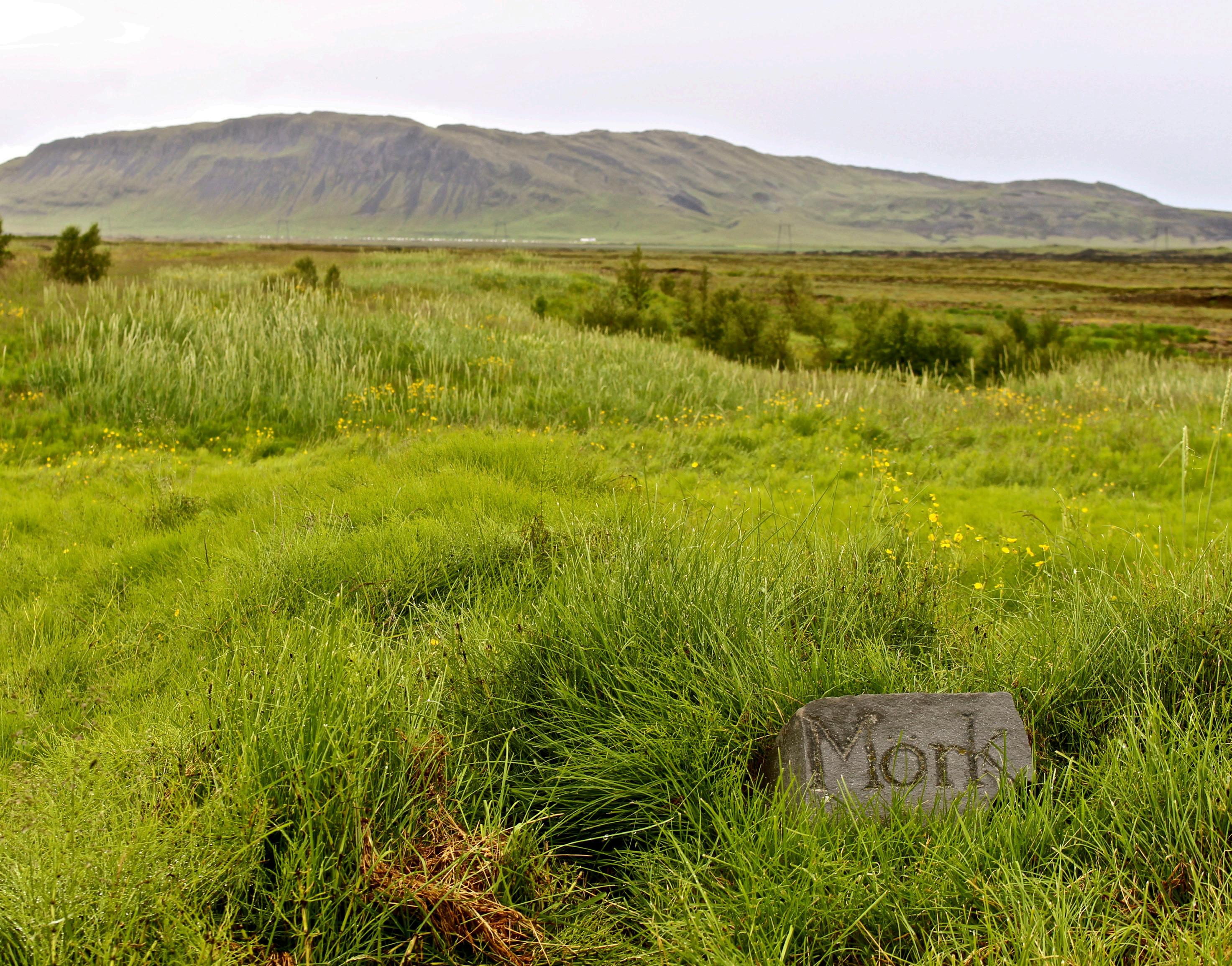
4 minute read
Skarfanes
from Thraedir_a_landi
by ferdalag


Advertisement
FINNBOGI AND ELÍSABET Finnbogi Höskuldsson began farming in Skarfanes in spring 1898 then 28 years old. His parents, Höskuldur Jónsson and Arndís Magnúsdóttir, gave up farming in Skarðssel and moved with him to Skarfanes. With them came his sister Sigríður the younger but she had always worked for her parents. Arndís became housekeeper for her son and maintained that position until spring 1901 when Elísabet Þórðardóttir, from Gröf in Ytrihreppur, came to them. Ragnhildur, Finnbogi´s sister, who worked at Stóri-Núpur, had befriended Elísabet and recommended her for work at Skarfanes. Finnbogi and Elísabet married in spring 1902 and Ragnhildur was proud of having found her brother such a good wife. Their first child was born that autumn, a boy named Magnús, after Arndís´, the boy´s grandmother´s father. Arndís died in Skarfanes in 1904 and Höskuldur died there in 1907.
THE LAND Skarfanes is high up in Landsveit, close to the imposing mountain Búrfell in the east, Hekla further away, the jewel of the area but also a threat. The terrible drifting sand largely originates from ash and pumice from that great volcano. Þjórsá frames the land, almost at a right angle, to the west and north. Skarfaneslækur flows by the farm on its route from sources further up in the lava field and into Þjórsá by Yrjar. East of the stream is the land of Ósgröf.
THE FARM Finnbogi says in his memoirs “… The farm in Skarfanes was, as others, built only provisionally after the earthquake in 1896 and could therefore no longer be considered inhabitable. I therefore had to embark on improving the accommodation if there was to be a future in farming there. And early in spring 1905, we began gathering building material from Eyrarbakki. … The house, which was an iron-clad timber house, was erected before winter 1905. It was considered very well made by that time´s standard. …“ But three years later, on the night of the 25th of July 1908, the farm burnt to the ground. “ … And although I ran out as soon as we became aware of the fire I couldn´t save anything as the fire had spread along the floor of the storage loft where it began. In the loft were stored all the most valuable items and the home´s winter provisions. …“ There were now two options. “ … to flee or start building again. …“ They chose the latter option and with good help from their neighbours they managed to move into a half-built house, without any heating, at the end of October. There were now four children, the oldest six and the youngest in its first year. Next summer, the fitting of the house was completed and it was equipped with a new cooker. WINTER OF FROST AND ERUPTION OF KATLA 1917-1918 “… The winter of 1917-1918 brought heavy frosts but was light in terms of snow. This led to the biggest lack of grass on all tough terrain in all my time as a farmer. In the summer of 1918, some of the hay therefore had to be fetched all the way from Austvaðsholt in the south but that is about 6 hours of walking with carrying horses each way. A week into October, Katla erupted and covered all grassy areas in ash. …“ (F.H.)
FINNBOGI AND ELÍSABET´S CHILDREN Finnbogi and Elísabet had eleven children, ten of which grew into adulthood: Magnús, b. 1902, d. 1994; Þórður, b. 1906, d. 1991; Dagbjört, b. 1908, d. 1999; Þóra, b. 1910, d. 2001; Anna, b. 1911, d. 2006; Arndís, b. 1912, d. 1987; Óskar, b. 1913, d. 1976; Valdimar, b. 1915, d. 1985; Karl, b. 1917, d. 1997 and Laufey, b. 1919, d. 1957.
WSOIL CONSERVATION In 1907, the Icelandic Soil Conservation Society was established and in the beginning, their work focused on stopping the drifting of sand. Skarfanes and Ósgröf were among the farms in Landsveit that were often badly affected by the drift of sand and inclement weather but Finnbogi considered conditions at Skarfanes for soil reclamation to be good. In 1924 he sought collaboration with the Soil Conservation Society. “… As our children were grown and well on their way to adulthood and I thought it likely that some of them would have a future there, I embarked upon asking the management of the soil conservation if it would begin by reclaiming the farmland and received a fairly enthusiastic response. …“ (F.H.) But the execution of the soil reclamation did not go well for various reasons. The farm Ósgröf, which had been deserted for five years, was part of the problem because the sand drifted from there onto the Skarfanes land. The owner of the Ósgröf land refused to participate in the cost of conservation and then pressure mounted on Finnbogi to buy that land. He believed he couldn´t afford it but decided to fence both farms at his own cost and the maintenance of the fences was in his care until 1941 when he gave up farming. There had been disputes about the fence and Finnbogi was of the opinion that these disputes were the main reason why none of his children had any desire to have a future at Skarfanes.
TO REYKJAVÍK 1941 In spring 1941, Finnbogi and Elísabet gave the Iceland Forest Service the land Skarfanes and followed their children to Reykjavík.










